Two Steinways and Three Roosevelts
Friday nights in January 1903 were good times to be a friend of the Roosevelts. Each week, an average of 350 lucky people received (and accepted) a several page, heavy paper stock invitation from the White House welcoming them to one of First Lady Edith Roosevelt’s Friday night musicales.[1] January 23, 1903 was a particularly good night to be in attendance at the White House musicale, as just that afternoon, President Theodore Roosevelt had accepted the marvelous gift of a custom art-case, gold Steinway piano from Mr. Fred P. Steinway himself.
At the presentation ceremony, Mr. Steinway, President of Steinway & Sons, gave a “felicitous presentation speech,” followed by Mr. Charles H. Steinway, Vice-President, playing Valse Poetique on the new piano welcoming it to its new Executive home.[2]
This grand piano, the company’s 100,000th and designed by Joseph and Richard Hunt, was not like any other Steinway grand piano—it was absolutely magnificent to say the least.
“The piano is in gold, is mounted upon three eagles half regardant with the outstretched wings, and standing upon square pedestals draped with laurel wreaths. The case is without moldings, but is adorned with a scroll of acanthus in varying tones of red, which serves to bind together the arms of the original thirteen states, which, beginning at the right, appear, displayed upon shields of dull maroon in the order in which they adopted the Federal Constitution.” [3]
If the exterior wasn’t beautiful enough, the inside of the lid was adorned with an allegorical impressionist painting by Thomas W. Dewing which depicted America receiving the nine muses. Like most art-case pianos of the time, this piano was designed specifically with the East Room in mind, seeing that “the gold of the piano matches the gilding on the mirror and other decorative surfaces and fixtures in the room, as well as the rich gold of the damask curtains and upholstery, and the style of the ornamentation is consistent with that of the room as a whole.”[4] For this reason, the piano stood as a unique artistic gem of the Executive Mansion, in addition to being an exceptional musical instrument. The Gold Steinway was also believed to be valued at $15,000 (approximately $443,000 today), and was indeed declared to be the “finest instrument in the country” by everyone who had the opportunity to see it.[5]
And plenty of people had the opportunity to see the piano in action, thanks to Mrs. Roosevelt. After the Gold Steinway replaced the old grand piano in the White House East Room following extensive 1902 renovations (including the addition of the West Wing), the East Room was established as a “focal point of the performing arts” in the White House.[6] This establishment began with Mrs. Roosevelt’s lavish Friday musicales, featuring pianists and singers often brought in by the Steinway & Sons Company; the Gold Steinway, along with regular concerts by noted musicians, marked the beginning of a now century-old tradition of live musical events in the White House.
At the first musical featuring the grand piano, which took place at 10 pm on January 23, 1903, the program featured Mr. Albert Lockwood, pianist, and Mrs. Dora Howard, soprano, who presented selections from Chopin, Dvorak, Tchaikovsky, and Schubert among others.[7] The “tones and volume of surpassing sweetness and strength [were] in harmony with the very beautiful exterior” of the piano.[8]
Sweet harmony would continue to flow from the Gold Steinway in the East Room for 35 years, and through seven administrations where Teddy Roosevelt, William Howard Taft, Woodrow Wilson, Warren Harding, Calvin Coolidge, Herbert Hoover, and finally Franklin Roosevelt would enjoy its music.
By 1938, Steinway & Sons was getting ready to produce their 300,000th piano, and decided that for this momentous occasion they would design yet another beautiful grand piano especially for the White House; to make room for the new piano, the 1903 Gold Steinway was donated to the National Museum, which is the present-day Smithsonian.
The designer of the new Steinway, Eric Gugler, was not only a New York architect and 1930s White House consultant, but he was also a friend of FDR. The two worked together to come up with a design for the new State piano, which would be a longer, square shape with slick, simple lines mimicking the art deco designs of the era.[9]
The resulting nine foot and seven inch piano was hand-made from Honduran mahogany, and features a gold leaf representation of the “five musical forms indigenous of America: a New England barn dance; a lone cowboy playing his guitar; the Virginia reel; two black field hands, one clapping and one dancing; and an [American] Indian ceremonial dance.”[10] The piano was supported by legs made of massive gilded eagles—the American symbol of freedom.
At a ceremony reminiscent of the one in 1903, the December 10, 1938 presentation of the piano to FDR by Mr. Theodore E. Steinway, then President of Steinway & Sons, was full of pride and excitement. Mr. Steinway remarked:
“Some five and thirty years ago we had the distinguished honor of presenting the instrument which has found its home here since that time. Now, because of your graciousness and generosity, Sir, this great distinction comes to us again. The motives that impelled this presentation are the same that impelled the first one, namely, it is a paean of thanksgiving by a family who arrived on these friendly shores from abroad and here were permitted to seek and make their homes and their lives, and to pursue their work with happiness and contentment.” [11]
After accepting the new piano he had helped design, and establishing its new home in the East Room, Franklin Roosevelt dedicated the instrument to “the advancement of music in every city, town and hamlet in the country."[12]
Since its dedication, the piano has been used to create “happiness and contentment” in the White House by presidents such as Harry Truman and Richard Nixon, as well as by many major musical guests who have helped to advance musical and cultural understanding throughout the United States. Although it was officially moved from the East Room in 1989, the second Steinway is typically alternated between the East Room and the White House Entrance Hall where it is regularly played today by members of the Marine Band during social functions.
Two President Roosevelts dedicated two Steinway pianos to help establish the White House as a hub for music in Washington moving forward into the 20thCentury. Edith Roosevelt’s contributions, most of all, set a precedent for cultural advancement through the arts, which continues to be represented by the second “National Steinway” serving over 79 years and 14 administrations in the White House.
“All those who worked on this piano sought to create an instrument which would be a State piano, one that would be at home in the White House.” [13]
For a closer look at the White House Steinway, check out this clip with the White House Curator:
Footnotes
- ^ White, H. Loring. 2005. Ragging It: Getting Ragtime Into History (and Some History Into Ragtime). iUniverse. p. 216.
- ^ The Washington Post (1877-1922); Washington, D.C. 1903. “THE GRAND PIANO: Presentation by Mr. Steinway at the White House Yesterday,” January 24. https://search.proquest.com/hnpwashingtonpost/docview/144486120/abstrac….
- ^ The Washington Post (1877-1922); Washington, D.C. 1903. “THE GRAND PIANO: Presentation by Mr. Steinway at the White House Yesterday,” January 24. https://search.proquest.com/hnpwashingtonpost/docview/144486120/abstrac….
- ^ “Object in Focus: The ‘Gold’ Piano, Pt. II.” 2017. L. Accessed September 27. http://lauracjenkins.com/blog/2016/6/6/object-in-focus-the-gold-piano-p….
- ^ Evening Star. 1903. “Finest Piano in the Country” January 22.
- ^ https://www.whitehousehistory.org/musical-events-at-the-white-house
- ^ The Washington Post (1877-1922); Washington, D.C. 1903. “FRIDAY EVENING PARTY: Three Hundred Invited to Hear White House New Piano.” January 24. https://search.proquest.com/hnpwashingtonpost/docview/144461245/abstrac….
- ^ Ibid.
- ^ The Obama White House. 2017. Catching Up with The Curator: The White House Steinway Piano. Accessed October 2. https://www.youtube.com/watch?v=e1HnWacj0qY.
- ^ “Treasures of the White House: Steinway Grand Piano.” 2017. WHHA. Accessed September 27. https://www.whitehousehistory.org/photos/treasures-of-the-white-house-s….
- ^ “The White House Steinway, 1938?, from the Eric Gugler Papers, 1889-1977.” 2017. Text. Accessed October 2. https://www.aaa.si.edu/collections/items/detail/white-house-steinway-16….
- ^ Ibid.
- ^ Ibid.


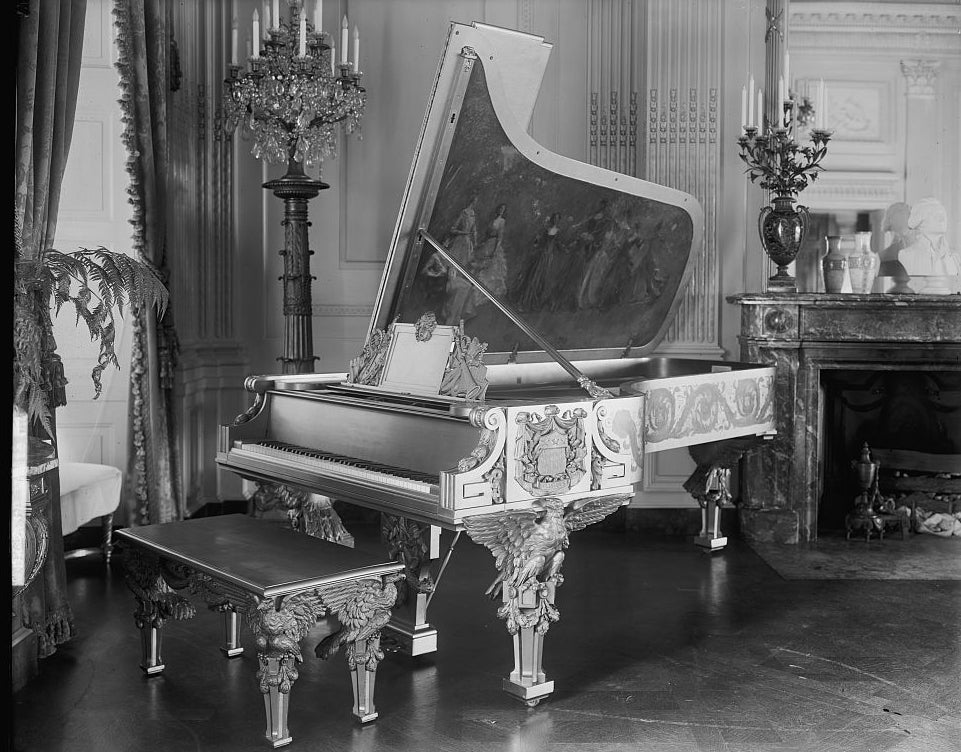
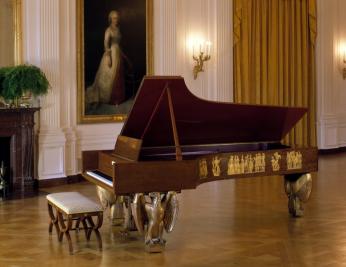
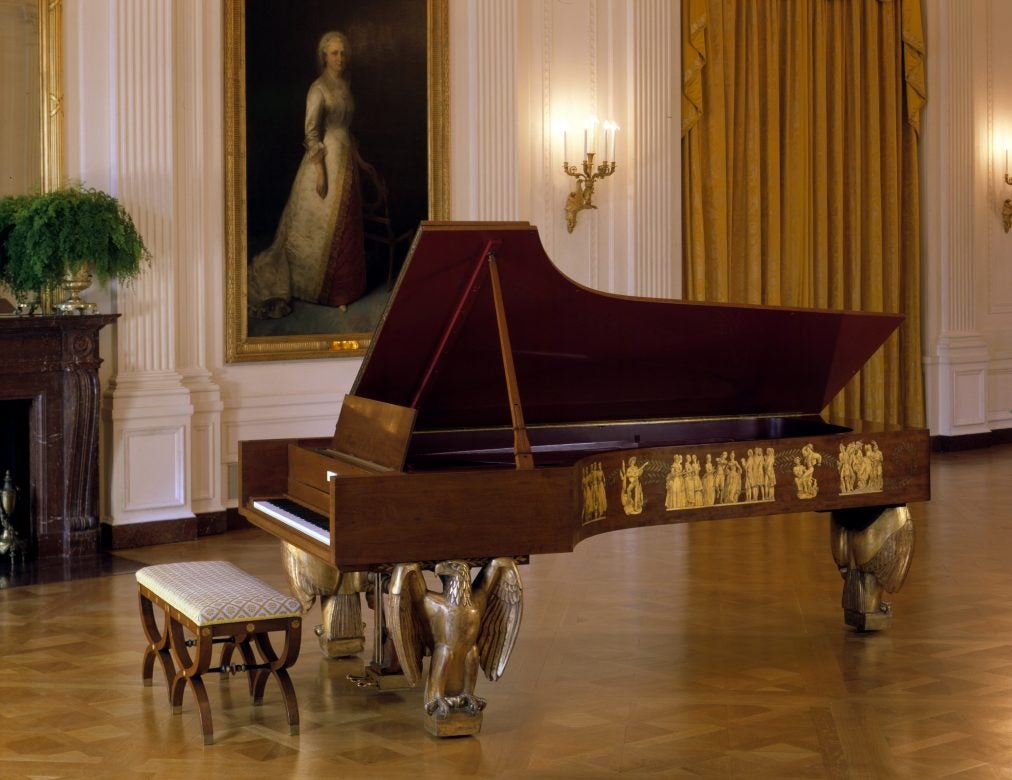
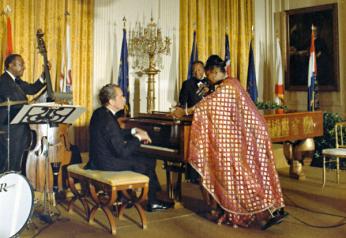
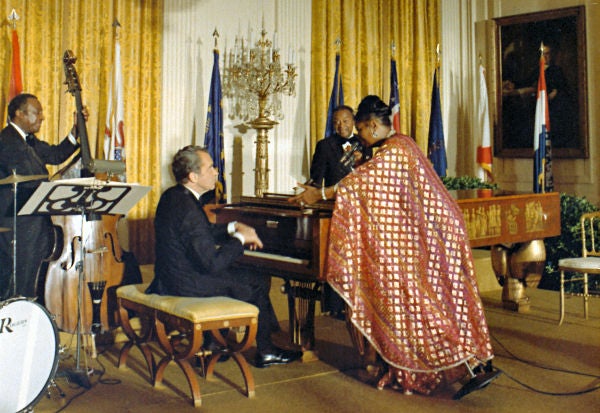
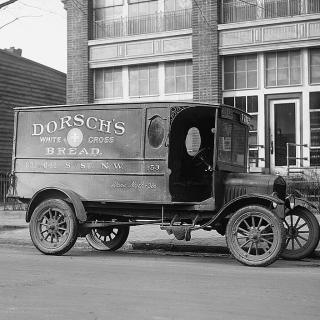
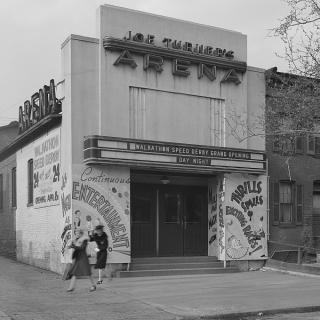
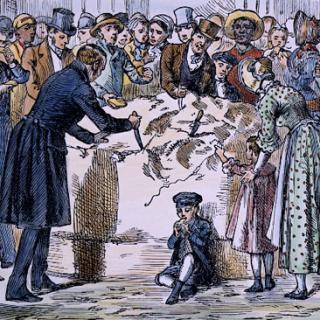
![Sketch of the mythical fuan by Pearson Scott Foresman. [Source: Wikipedia]](/sites/default/files/styles/crop_320x320/public/2023-10/Goatman_Wikipedia_Faun_2_%28PSF%29.png?h=64a074ff&itok=C9Qh-PE1)












